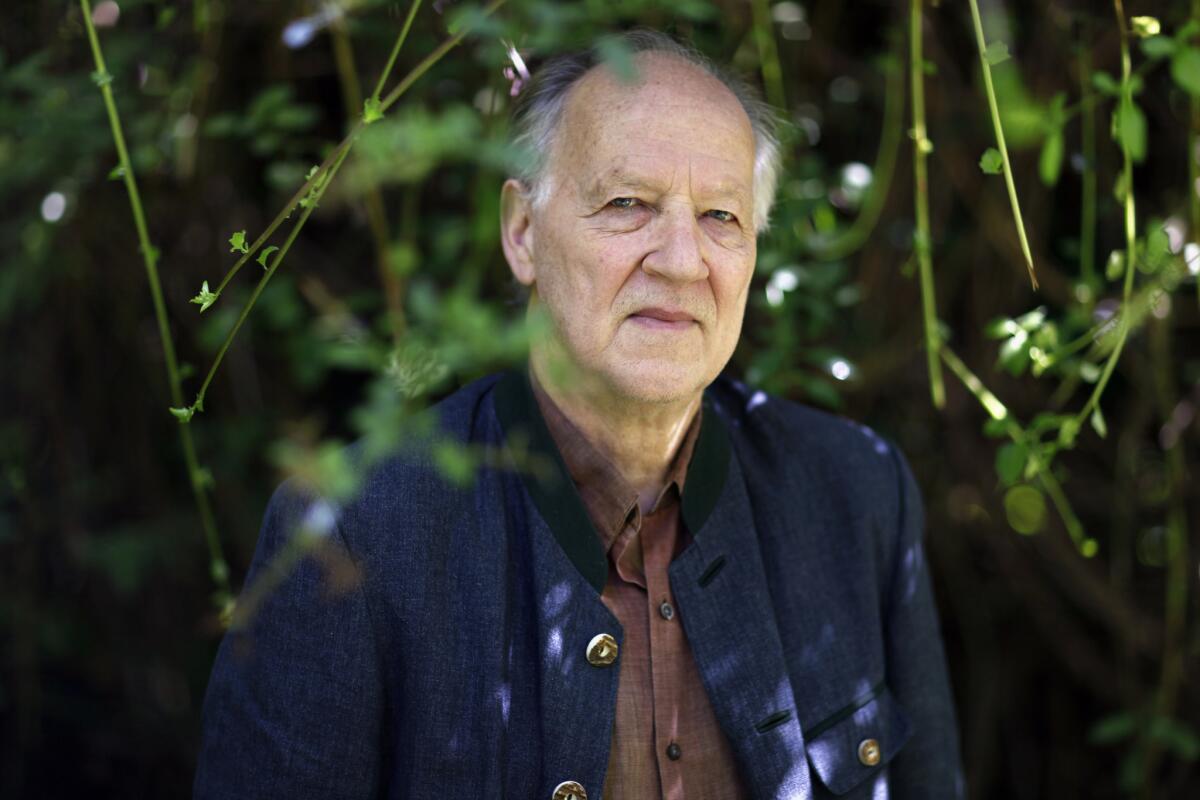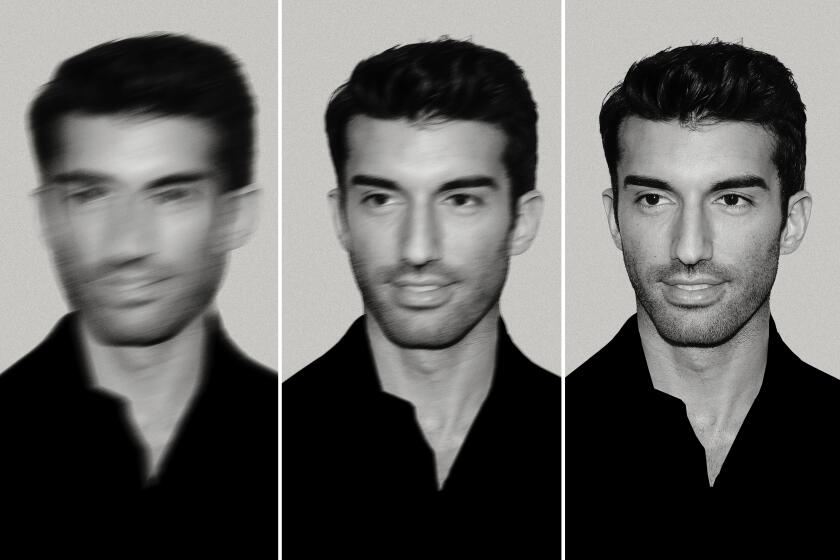Filmmaker Werner Herzog on his new box set and more

- Share via
Filmmaker Werner Herzog — German-born, having made films in the Amazon, the Sahara, Wisconsin, Antarctica, all points between and most recently a resident of Los Angeles — belongs to the world, and should be cherished accordingly. An intrepid explorer of the dark corners of the soul, he is, in his own words, “a good soldier of cinema.”
The new Blu-ray box set “Herzog: The Collection,” released this week by Shout! Factory, contains 16 films made from 1970 to 1999 and captures the stunning breadth and intensity of his work while still representing only a fraction of his output. The set contains some of his best-known titles, including “Aguirre, the Wrath of God,” “Nosferatu the Vampyre” and “Fitzcarraldo,” as well as the film about his frequent collaborator Klaus Kinski, “My Best Fiend.” Capable of shifting between fiction features that capture the true pulse of life and documentaries so strange they seem made up, Herzog himself cuts a famously intense and imposing figure, albeit with unexpected humor and even tenderness.
He played the stoically fearsome villain in last year’s gritty Tom Cruise action film “Jack Reacher,” and has been a voice on the animated series “The Simpsons.” In August he will be running another edition of his Rogue Film School seminar in Los Angeles, while his next feature film “Queen of the Desert,” starring Nicole Kidman, Robert Pattinson and James Franco, is expected to hit the fall festival circuit. Herzog will appear as part of the Sundance Next Fest in Los Angeles on Saturday, Aug. 9 in conversation with filmmakers David and Nathan Zellner following a screening of their feature “Kumiko, the Treasure Hunter.”
He found time for a recent interview in a nondescript office park in West L.A. Mindful to acknowledge that at 71 he isn’t done yet, he perhaps inadvertently summed himself up when he said, “I have not been afraid to do what others normally won’t do.”
You seem to be someone who is always pushing forward, constantly working on something new, and so what does it mean for you stop and take a look back?
Finally you do have a selection of some of my finest work, available in very high quality. So I’m very proud. Just this morning I looked through it and what I realized is it’s basically about men. ‘Aguirre, the Wrath of God,’ ‘Heart of Glass,’ ‘Little Dieter Needs to Fly,’ ‘Stroszek’ and so on. Only one film about a woman, ‘Land of Silence and Darkness,’ and I think this is my deepest film I ever made.
It’s a film dating back to the early ‘70s and it’s very, very strange because now having made ‘Queen of the Desert’ I realize that I should have made many, many, many more films about women, because I’m really good with women, maybe even better than with men. And that’s a huge surprise for me. But since I had written all my screenplays myself, it was always about characters that had some sort of affinity with me, hence men.
You’ve long moved back and forth between fiction films and documentaries. Are they the same to you, do they come from the same place?
In a way, yes. It’s just movies for me, all of them. And when you speak about documentaries, American audiences immediately think it’s the kind of documentaries you see on TV, that are part of journalism. However my documentaries are clearly divorced from journalism. They are very close to what constitutes a feature film – sometimes scripted, a lot of times staged, stylized, wildly edited, wildly narrated. They have a strong affinity with feature films. Sometimes I feel like explaining that I’m not a documentary filmmaker at all. What you think of as documentaries are feature films in disguise.
Some of your films have infamous stories behind their production, such as hauling a boat over a mountain for “Fitzcarraldo” or hypnotizing the cast of “Heart of Glass.” Does it bother you if the story of making the movie overwhelms the movie itself?
That’s not my problem, it’s a problem of the media. They make big stories out of it — why does he hypnotize the entire cast for a movie? It’s very easy to explain it. The story is of a village that lapses into a collective trance-like state, and they walk into a foreseen, prophesied disaster. How do you make a movie of a state of trance? It’s a stylization. End of story.
Do you see yourself as the central figure in your films, the relationship —
I have to interrupt you. No. the answer is no. I’m just a storyteller. Please don’t confuse the character in a story and the storyteller. Of course there is a connection and of course there is a human being that you sense behind the films, but don’t take it one-on-one that Herzog is Aguirre, the mad conquistador or something like that. This attempt has been made and it has failed all the time. Thank God, I’m not the central figure of my films.
Is it important for you to approach both your filmmaking and your life with the same sense of adventure?
I’m a vehement opponent of adventure. Adventure doesn’t exist anymore. You can book in a travel agency an adventure trip to Papua New Guinea to see the headhunters and cannibals. That’s how deeply it has degraded nowadays. Adventure belongs to a different age, which is over 150 years [ago] at least. At a time where damsels in distress fainted on a couch and young men would meet in pistol duels at dawn. It doesn’t exist anymore.
But you’ve traveled to some pretty remote and exotic places in making your films.
Any idiot can go to Antarctica. And any idiot can climb Mount Everest. Even grannies have done it. There are thousands lining up. There is no adventure left.
More to Read
Only good movies
Get the Indie Focus newsletter, Mark Olsen's weekly guide to the world of cinema.
You may occasionally receive promotional content from the Los Angeles Times.











